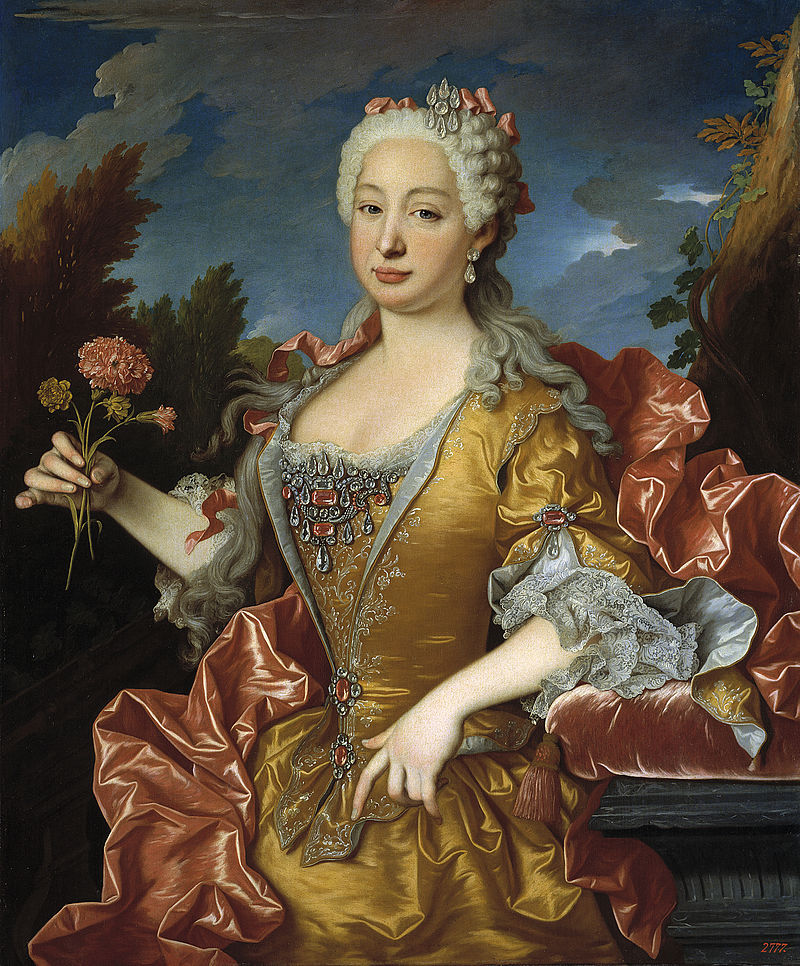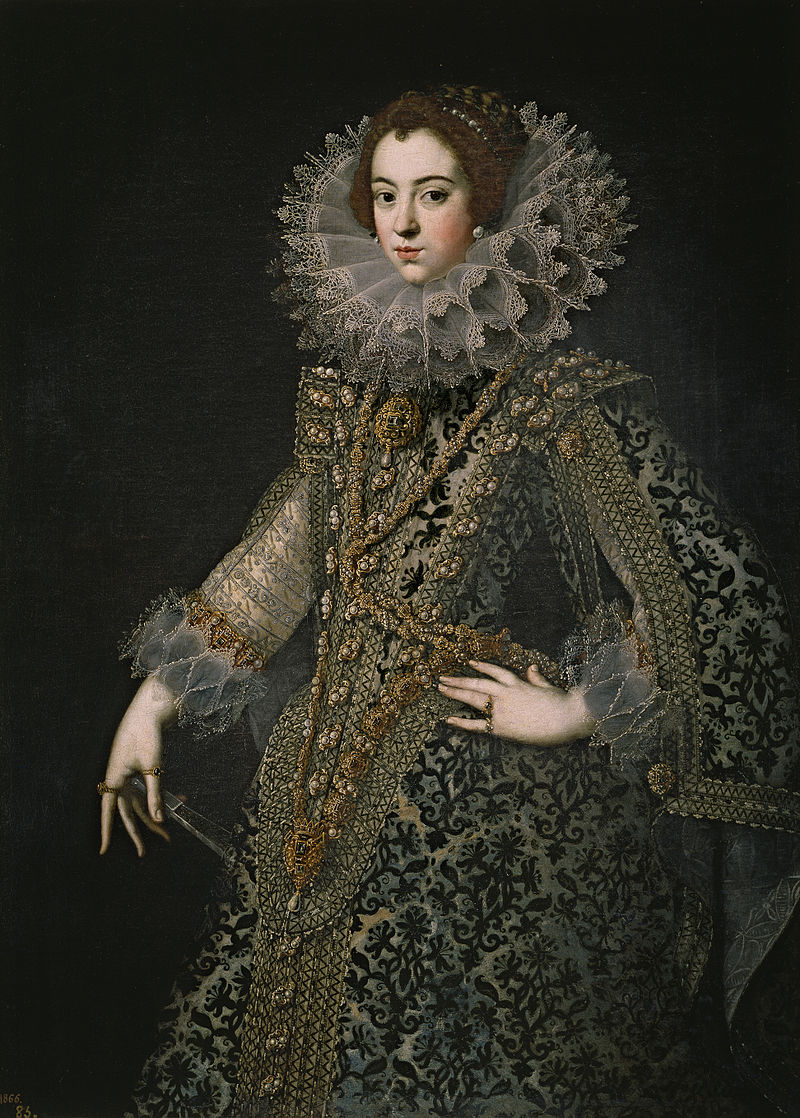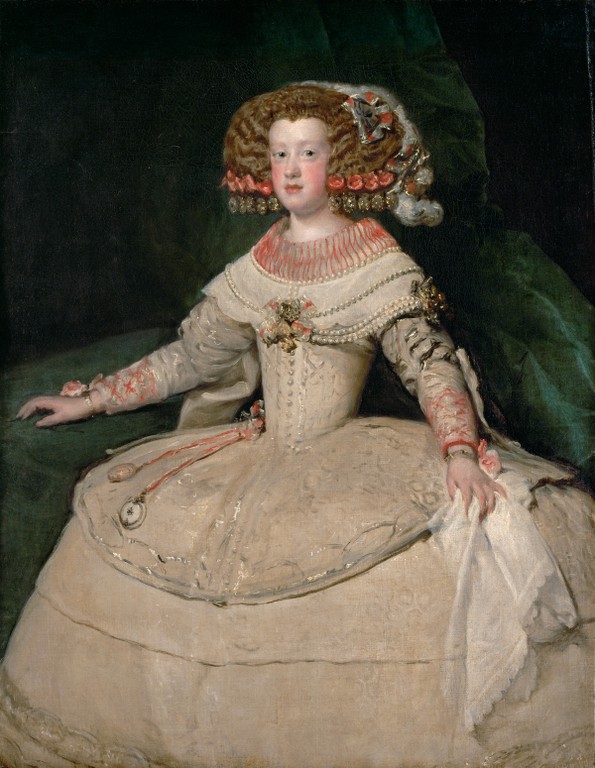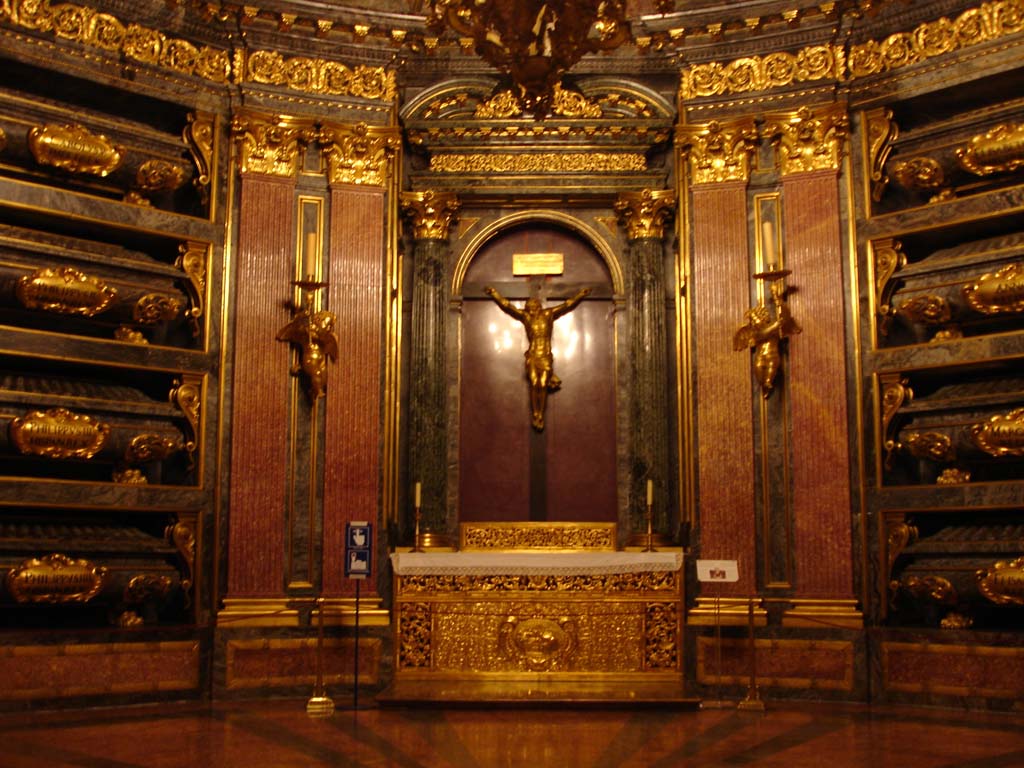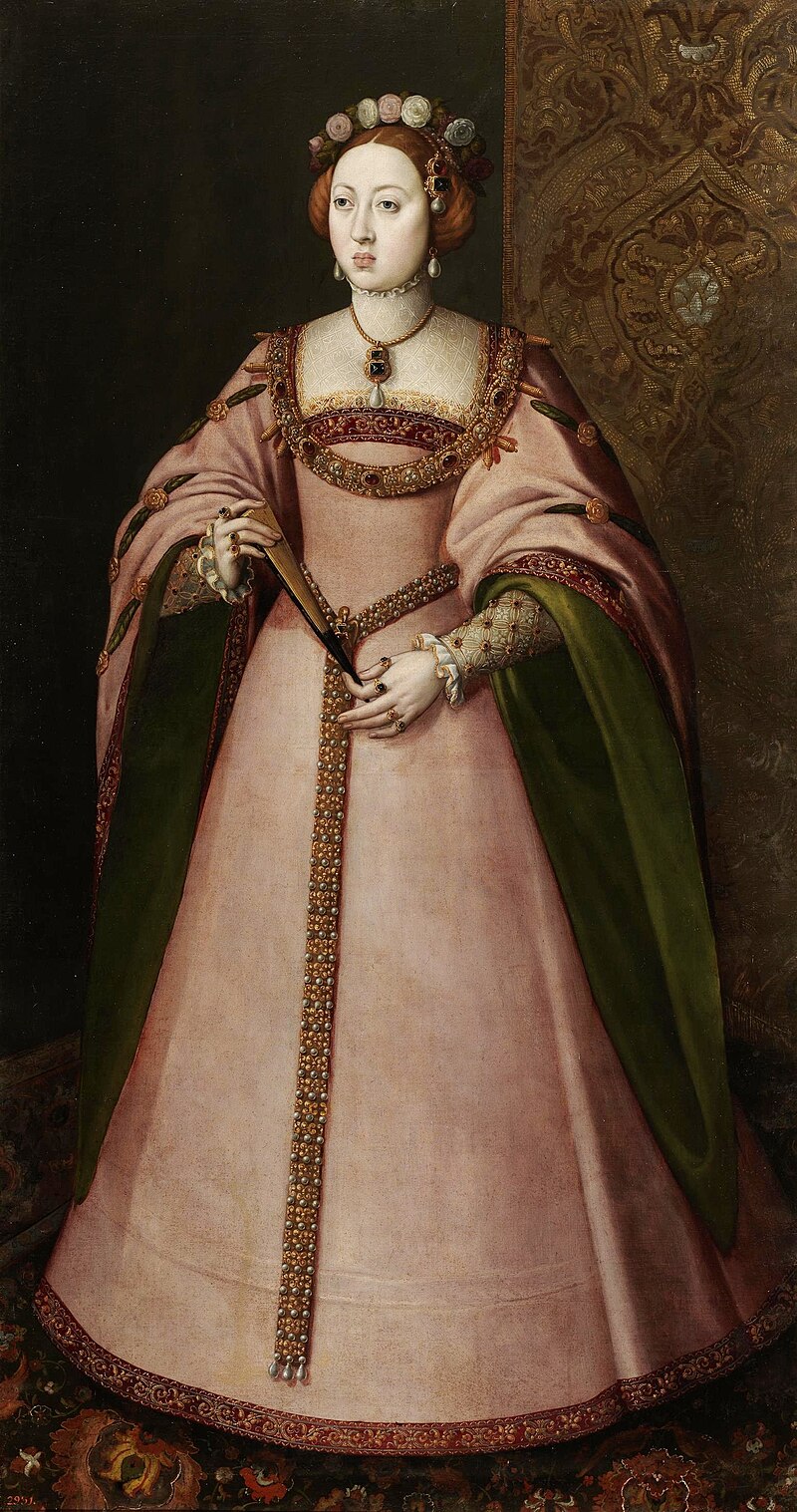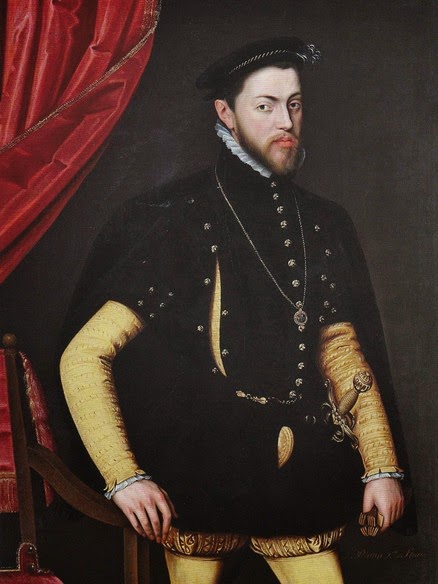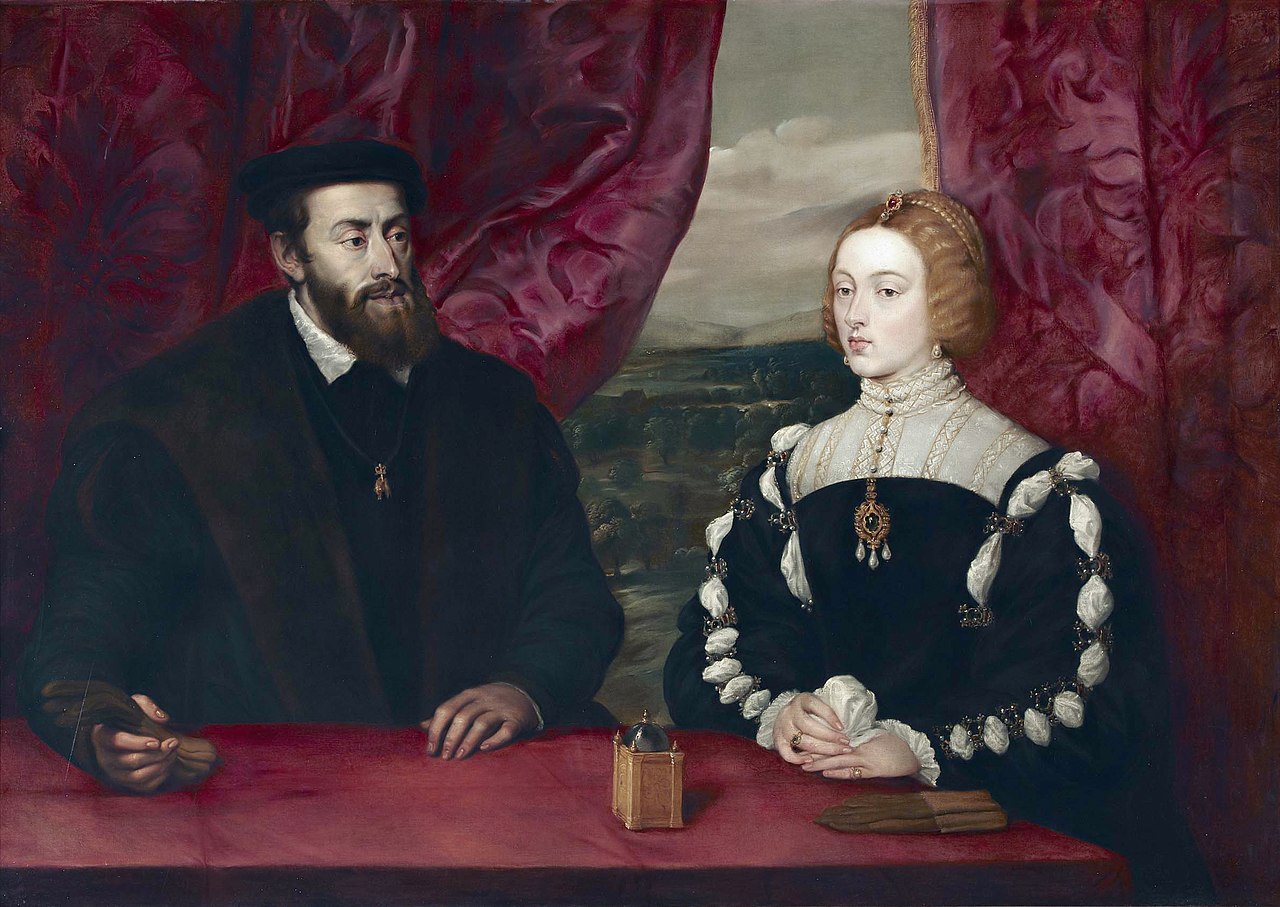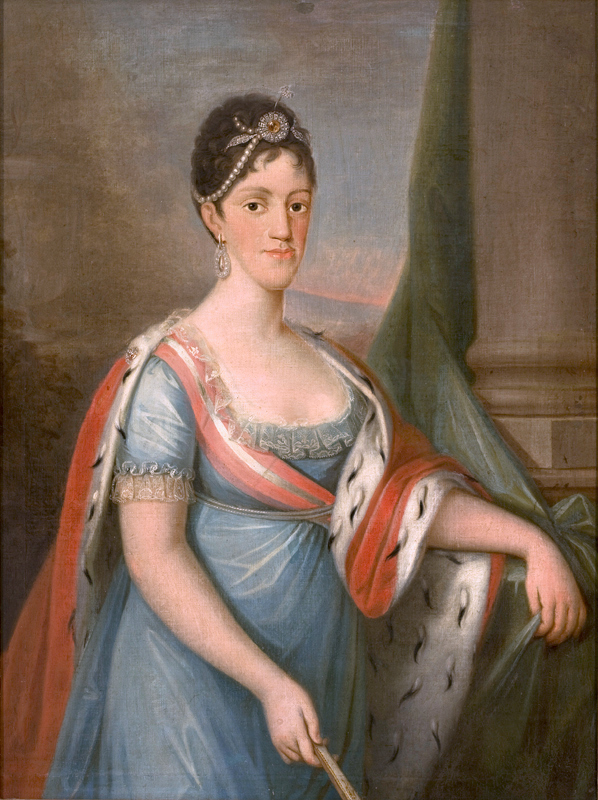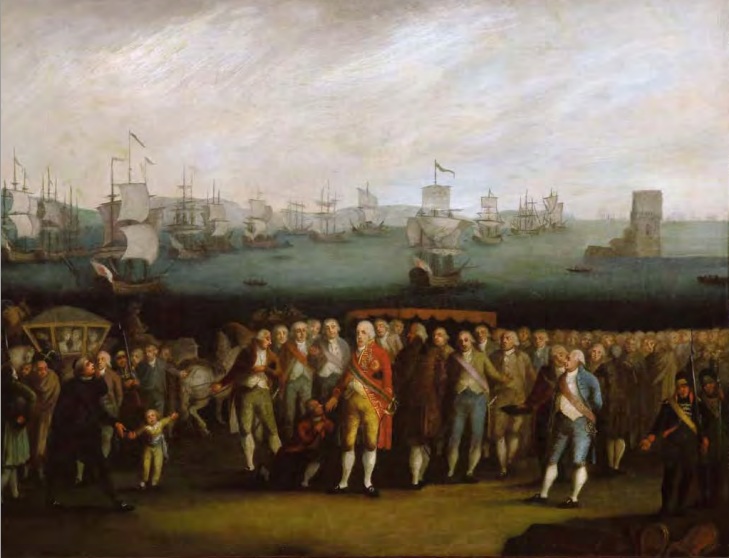by Susan Flantzer
© Unofficial Royalty 2023

Eleanor of Portugal, Holy Roman Empress; Credit – Wikipedia
The Holy Roman Empire was a limited elective monarchy composed of hundreds of kingdoms, principalities, duchies, counties, prince-bishoprics, and Free Imperial Cities in central Europe. The Holy Roman Empire was not really holy since, after Holy Roman Emperor Charles V in 1530, no emperors were crowned by the pope or a bishop. It was not Roman but rather German because it was mainly in the regions of present-day Germany and Austria. It was an empire in name only – the territories it covered were mostly independent each with its own rulers. The Holy Roman Emperor directly ruled over only his family territories, and could not issue decrees and rule autonomously over the Holy Roman Empire. A Holy Roman Emperor was only as strong as his army and alliances, including marriage alliances, made him. His power was severely restricted by the many sovereigns of the constituent monarchies of the Holy Roman Empire. From the 13th century, prince-electors, or electors for short, elected the Holy Roman Emperor from among the sovereigns of the constituent states.
Frequently but not always, it was common practice to elect the deceased Holy Roman Emperor’s heir. The Holy Roman Empire was an elective monarchy. No person had a legal right to the succession simply because he was related to the current Holy Roman Emperor. However, the Holy Roman Emperor could and often did, while still alive, have a relative (usually a son) elected to succeed him after his death. This elected heir apparent used the title King of the Romans.
- Learn more at Unofficial Royalty: What was the Holy Roman Empire?
*********************
Infanta Eleanor of Portugal (Leonor in Portuguese) was the wife of Friedrich III, Holy Roman Emperor, who was also the reigning Duke of Styria, Carinthia, and Carniola and Duke (Duchy of Austria) and then Archduke of Austria (Archduchy of Austria). Eleanor was born on September 18, 1434, in Torres Vedras, Portugal. She was the sixth of the nine children and the third but the eldest surviving of the five daughters of King Duarte of Portugal and Eleanor of Aragon. Eleanor’s paternal grandparents were King João I of Portugal and Philippa of Lancaster. Philippa was the daughter of John of Gaunt, 1st Duke of Lancaster, son of King Edward III of England, and therefore Eleanor’s father King Duarte was a great-grandson of King Edward III of England, a nephew of King Henry IV of England, and first cousin of King Richard II of England and King Henry V of England. Eleanor’s maternal grandparents were King Fernando I of Aragon and Eleanor, 3rd Countess of Alburquerque.
Eleanor had eight siblings:
- Infante João of Portugal (1429 – 1433), died in childhood
- Infanta Philippa of Portugal (1430 – 1439), died in childhood
- King Afonso V of Portugal (1432 – 1481), married (1) Isabella of Coimbra, had three children including King João II of Portugal (2) Joanna of Castile, his niece, no children
- Infanta Maria of Portugal (born and died 1432), died in infancy.
- Infante Fernando of Portugal, Duke of Viseu (1433 – 1470), married his cousin Beatriz of Portugal, had nine children including King Manuel I of Portugal
- Infante Duarte of Portugal (born and died 1435)
- Infanta Catarina of Portugal (1436 – 1463), became a nun
- Infanta Joana of Portugal (1439 – 1475), married King Enrique IV of Castile, had one daughter Joanna of Castile who married her uncle Afonso V above
In 1438, when Eleanor was four years old, her father King Duarte died from the plague, causing a political crisis in Portugal. Eleanor’s six-year-old brother became King of Portugal as Afonso V. It was assumed that King Duarte’s brothers would be the regents for the underage Afonso but in his will, Duarte had named his unpopular wife Eleanor of Aragon as regent. Duarte’s brother Infante João, Constable of Portugal gained the backing of the bourgeoisie in the Cortes, an assembly of representatives of the estates of the realm – the nobility, clergy, and bourgeoisie – to elect his brother Infante Infante Pedro, Duke of Coimbra, as regent. However, the nobility backed Eleanor of Aragon’s claim to be regent and threatened civil war. The crisis was defused by a complicated and tense power-sharing arrangement between Eleanor’s mother Eleanor of Aragon and her uncle Infante Pedro, Duke of Coimbra. Eleanor and her siblings were placed under the guardianship of their uncle Infante Pedro, Duke of Coimbra. In 1440, Eleanor of Aragon was removed from sharing the regency, and she left Portugal, living in Toledo, Kingdom of Castile where she died in 1445. It was in this tense atmosphere that Eleanor grew up.
Eleanor’s paternal aunt Isabella of Portugal had married Philip III, Duke of Burgundy, the ruler of the vast Burgundian State. In 1440, 25-year-old Friedrich, Duke of Styria, Carinthia, and Carniola and then Duke of Austria, later Archduke of Austria, was unanimously elected King of the Romans. Although effectively Holy Roman Emperor, he would not officially become Holy Roman Empire until his coronation by the pope in Rome. A marriage with Friedrich was probably suggested by Eleanor’s aunt Isabella of Portugal, Duchess of Burgundy. Eleanor was also suggested as a bride for the future King Louis XI of France but she preferred Friedrich because a marriage with him would make her an empress instead of a queen.
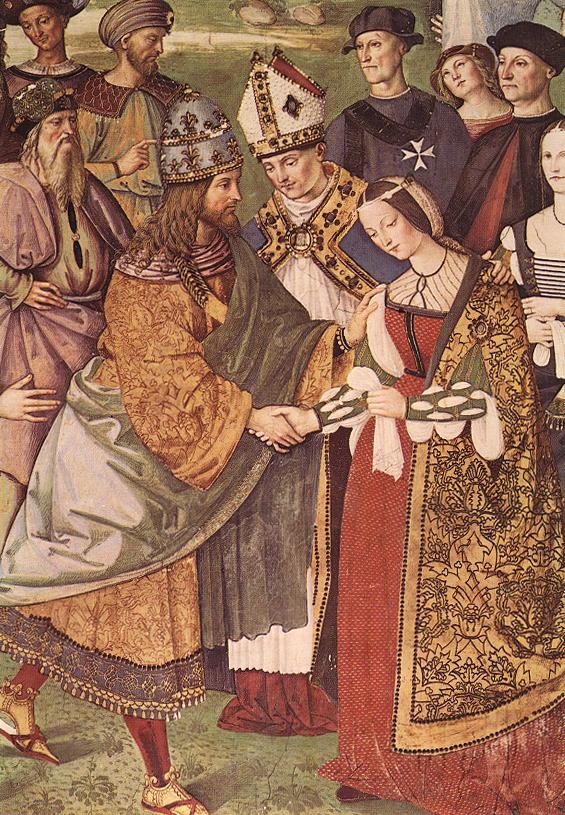
Eleanor meeting Friedrich for the first time by Pinturicchio, circa 1502-1507; Credit – Wikipedia
Marriage negotiations were conducted by Eleanor’s maternal uncle King Alfonso V of Aragon and Naples and completed in 1451. In November 1451, Eleanor left Portugal for the port city of Livorno, then in the Republic of Florence, now in Italy. After an arduous voyage, with stormy weather, skirmishes with pirates, and rumors that the ship had been lost at sea, Eleanor finally arrived in Livorno in January 1452 after a 104-day voyage. 18-year-old Eleanor met her 37-year-old groom-to-be in Siena on February 24, 1452, and together they traveled to Rome. On March 16, 1452, Eleanor and Friedrich were married by Pope Nicholas V. Finally, on March 19, 1452, Friedrich and Eleanor were anointed in St. Peter’s Basilica by Cardinal Francesco Condulmer, Vice-Chancellor of the Holy Roman Church, and then they were crowned as Holy Roman Emperor and Holy Roman Empress by Pope Nicholas V.
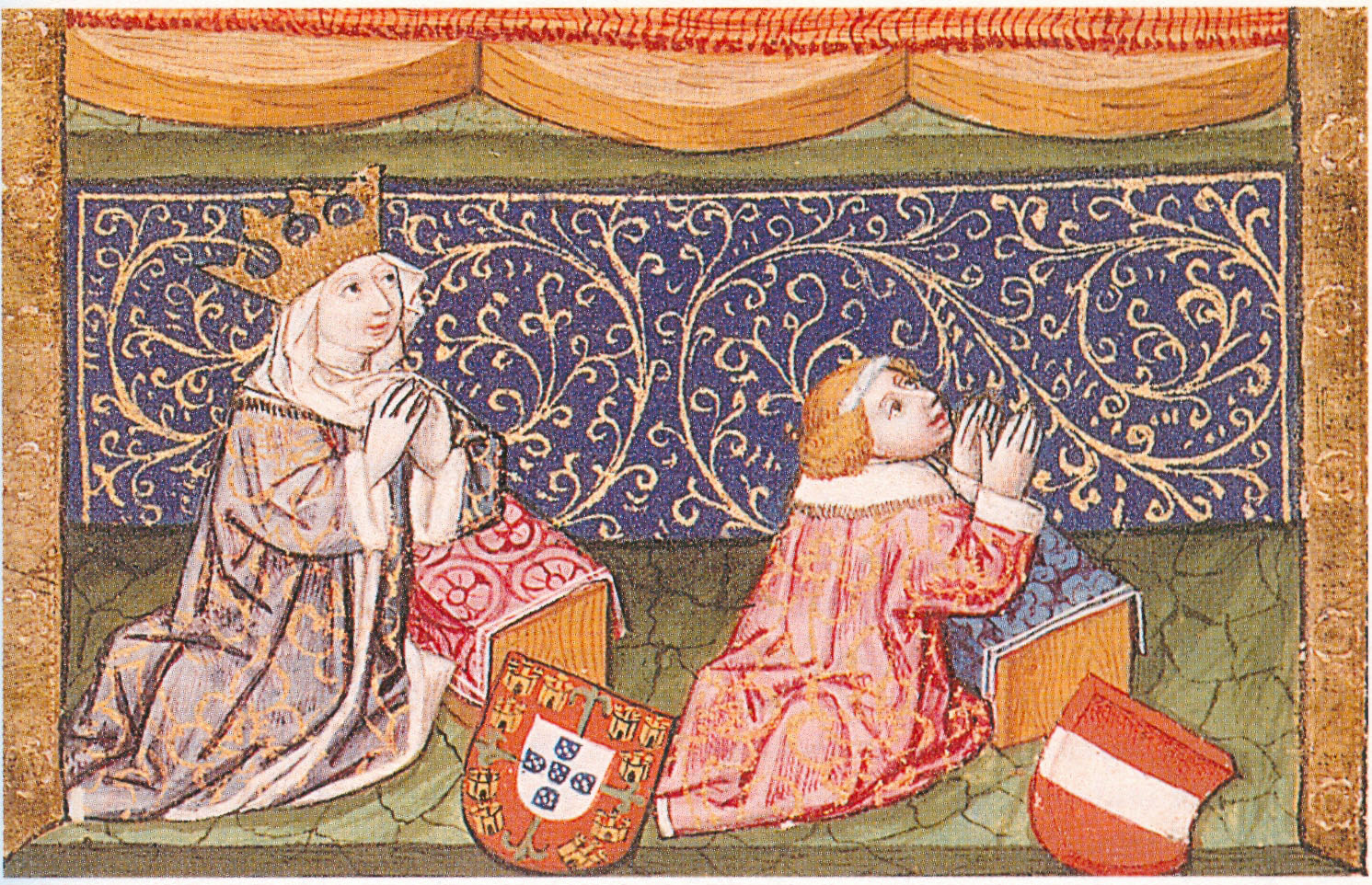
Eleanor and her son Maximilian from Empress Eleanor’s Book of Hours; Credit – Wikipedia
Friedrich and Eleanor had five children but only two survived childhood:
- Archduke Christoph of Austria (1455 – 1456), died in infancy
- Maximilian I, Holy Roman Emperor (1459 – 1519), married (1) Mary, Duchess of Burgundy (in her own right), had three children including Philip of Austria, Lord of the Netherlands, Duke of Burgundy (2) Anne, Duchess of Brittany (in her own right), no children, proxy marriage annulled (3) Bianca Maria Sforza, no children
- Helene of Austria (1460 – 1462), died in early childhood
- Kunigunde of Austria (1465 – 1520), married Albrecht IV, Duke of Bavaria, had seven children
- Johannes of Austria (1466 – 1467), died in early childhood
Eleanor and Friedrich were very different and their marriage was not happy. Eleanor loved dancing, gambling, and hunting while Friedrich was more serious. Friedrich sent Eleanor’s Portuguese entourage back to Portugal because of the cost which caused Eleanor to suffer from homesickness. Friedrich blamed Eleanor for causing the deaths of three of their children by making them eat Portuguese food, so he entirely took on the responsibility of raising their two surviving children.

A depiction of Eleanor’s tomb lid; Credit – Wikipedia
After fifteen years of marriage, Eleanor, aged 32, died on September 3, 1467, from dysentery in Wiener Neustadt, Duchy of Styria, now in Austria. She was buried at the Neukloster Abbey in Wiener Neustadt which was founded by her husband and where her three children who died in childhood were buried. Friedrich survived his wife Eleanor by twenty-six years, dying on August 19, 1493, at the age of 77. He was buried at St. Stephen’s Cathedral in Vienna, Austria in a magnificent tomb.

Friedrich III, Holy Roman Emperor in old age; Credit – Wikipedia
Friedrich III, Holy Roman Emperor had laid the foundation that would keep the House of Habsburg in a power play position until its fall after World War I in 1918. Friedrich and Eleanor’s son Maximilian I, Holy Roman Emperor married Mary, Duchess of Burgundy, the ruler of the Burgundian State. Friedrich’s and Eleanor’s grandson Philip of Austria, Lord of the Netherlands, Duke of Burgundy married Juana I, Queen of Castile and León and Queen of Aragon. Friedrich’s and Eleanor’s great-grandson Charles V, Holy Roman Emperor (also King Carlos I of Spain among other titles), one of the most powerful ever monarchs, had a large number of titles due to his vast inheritance of the Austrian, Burgundian, and Spanish realms.
This article is the intellectual property of Unofficial Royalty and is NOT TO BE COPIED, EDITED, OR POSTED IN ANY FORM ON ANOTHER WEBSITE under any circumstances. It is permissible to use a link that directs to Unofficial Royalty.
Works Cited
- Edward, King of Portugal (2023) Wikipedia. Wikimedia Foundation. Available at: https://en.wikipedia.org/wiki/Edward,_King_of_Portugal (Accessed: March 4, 2023).
- Eleanor of Portugal, Holy Roman Empress (2023) Wikipedia. Wikimedia Foundation. Available at: https://en.wikipedia.org/wiki/Eleanor_of_Portugal,_Holy_Roman_Empress (Accessed: March 4, 2023).
- Flantzer, Susan. (2023) Friedrich III, Holy Roman Emperor, Duke of Styria, Carinthia, and Carniola, Archduke of Austria, Unofficial Royalty. Available at: https://www.unofficialroyalty.com/friedrich-iii-holy-roman-emperor-duke-of-styria-carinthia-and-carniola-archduke-of-austria/ (Accessed: March 4, 2023).
- Flantzer, Susan. (2021) What was the Holy Roman Empire?, Unofficial Royalty. Available at: https://www.unofficialroyalty.com/what-was-the-holy-roman-empire/ (Accessed: March 4, 2023).
- Frederick III, Holy Roman Emperor (2023) Wikipedia. Wikimedia Foundation. Available at: https://en.wikipedia.org/wiki/Frederick_III,_Holy_Roman_Emperor (Accessed: March 4, 2023).
- Friedrich III. (HRR) (2023) Wikipedia (German). Wikimedia Foundation. Available at: https://de.wikipedia.org/wiki/Friedrich_III._(HRR) (Accessed: March 4, 2023).
- Leonor de Portugal, Imperatriz Romano-germânica (2022) Wikipedia (Portuguese). Wikimedia Foundation. Available at: https://pt.wikipedia.org/wiki/Leonor_de_Portugal%2C_Imperatriz_Romano-Germ%C3%A2nica (Accessed: March 4, 2023).
- Wheatcroft, Andrew. (1995) The Habsburgs. London: Viking.
- Wilson, Peter H. (2016) Heart of Europe – A History of the Holy Roman Empire. Cambridge, MA: Harvard University Press.





